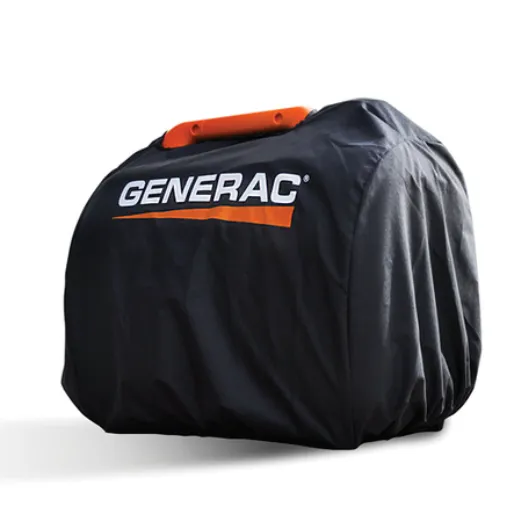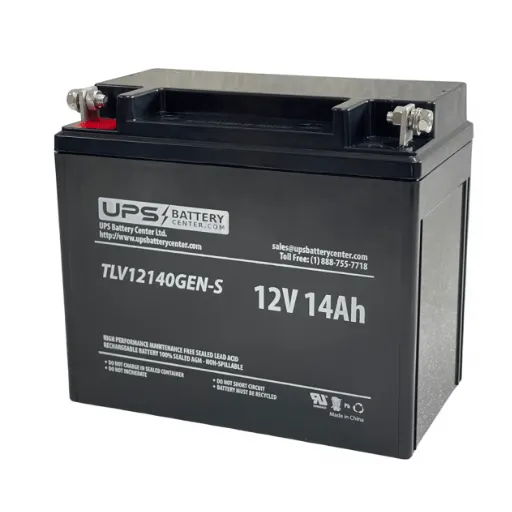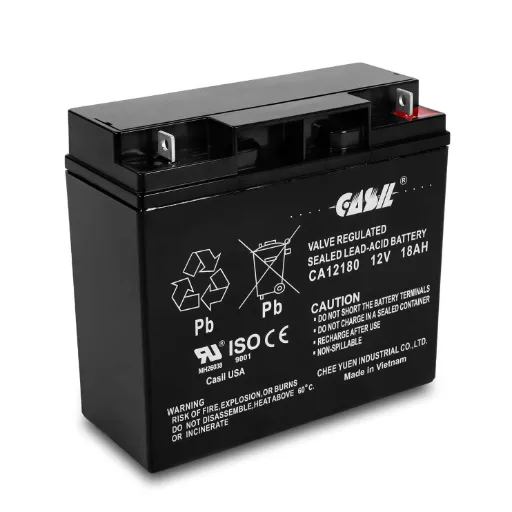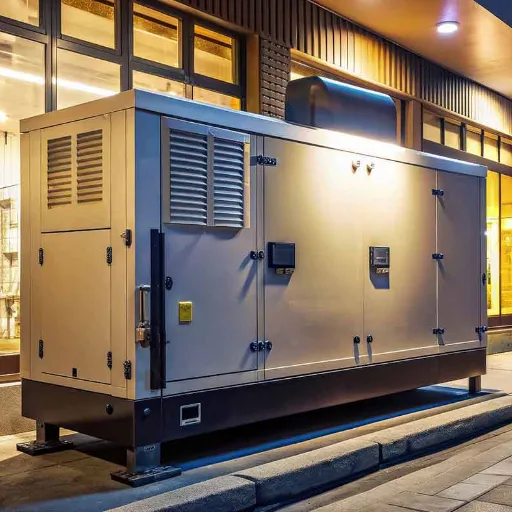When it comes to safeguarding your home against unexpected power outages, natural gas whole house generators have become an increasingly popular solution for homeowners. These systems provide reliable, efficient, and seamless power during emergencies, ensuring that your daily life continues uninterrupted. However, understanding the costs associated with a natural gas generator for your entire home can feel overwhelming. From installation expenses to operational costs, there are many factors to consider. This comprehensive guide is designed to demystify the pricing variables, explain key cost considerations, and help you make an informed decision about investing in a natural gas whole-house generator.
What Factors Affect Natural Gas Generator Installation Cost?
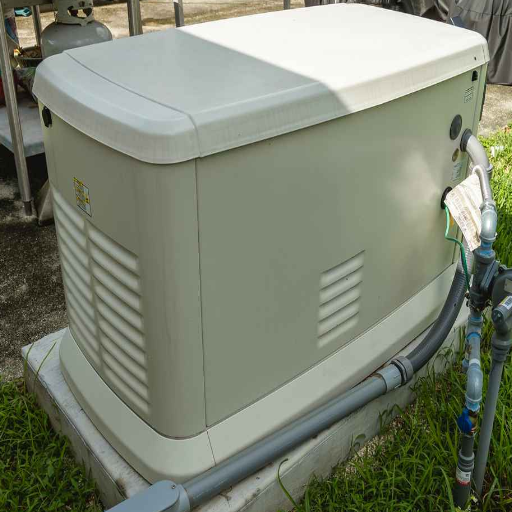
Transfer Switch Installation and Home’s Electrical System Upgrades
When integrating a natural gas generator into your home, an important aspect is the installation of a transfer switch. This device automatically and safely powers your home from the generator in case of an outage, safeguarding compliance with electrical safety standards. Generally, for both the hardware and installation, transfer switches can cost anywhere from $500 to $2,000; this amount varies based on the generator’s model and capacity as well as the intricacy of your existing electrical system.
Another potential cost factor when purchasing a transfer switch is the upgrade of your home’s electrical system. For type, older electrical panels might not have the required capacity or wiring to support a whole house generator, meaning they would need to be replaced or extensively modified. Upgrading electrical panels can also range from $1,200 to $3,000 depending on the cost of local labor, materials, and municipal building codes.
As these open-ended costs highlight, a licensed electrician needs to be consulted first. Not only will electricity professionals do an assessment, they will also ensure that your home’s electric readiness is up to par with installation requirements. These decisions greatly impact the efficiency of the generator, but as a whole, improve the electrical safety of the house.
Gas Line Installation and Gas Meter Requirements
Safe and efficient generator operation requires correct gas line installation. The installation process begins with assessing the generator’s power output and then determining the gas supply capacity in BTUs. This assessment needs the expertise of either a licensed plumber or gas technician who will inspect the current gas system, check the existing pressure levels and identify if the gas used is natural gas from the grid or propane gas from a tank.
While installing new gas lines, the pipe material and diameter are very crucial, in addition to the routing. Every single one of these factors must meet the safety standards and operational demands. Flexible corrugated stainless steel tubing (CSST) or even steel are the primary choice of materials in construction because of their corrosion, wear, and tear-resistant properties. Pressurized gas in a generator performs best with a precisely calculated pipeline length and bend quantity to ensure smooth flow rate, optimal gas pressure, and fewer gas pressure drops.
Along with the gas meter, the gas meter is also very important. It is important to analyze the capacity of the existing gas meter for generators that have high gas consumption demand. Many home utility meters have insufficient capacity to accommodate the combined gas consumption of household appliances and a standby generator. If the meter fails to meet requirements, it might be necessary to change to a bigger meter, install the additional meter, which in any case will have to be discussed with the local utility office.
An incorrect installation of a gas line or using a substandard gas meter is likely to incur problems such as deficiencies in system operation, comprehensive hazards, and even breaching the city’s rules. Because of such undertakings, an adequate evaluation of the situation alongside the requirements becomes compulsory in this scenario.
How Much Will a Whole Home Generator Installation Project Cost in Total?
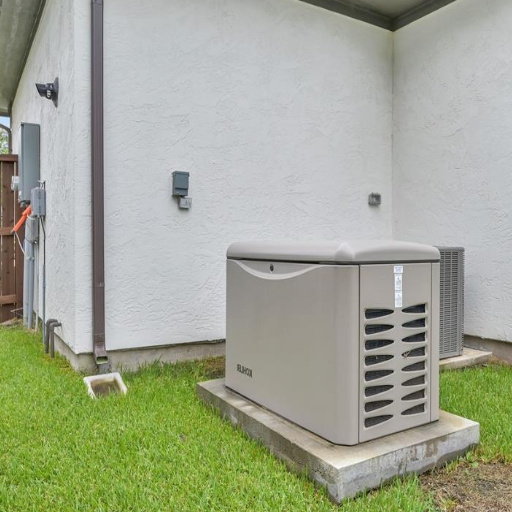
Breaking Down the Complete Cost of Installing a Standby Generator
When estimating the cost of a standby generator, there are several main aspects that must be considered before arriving at a price. These aspects include the costs associated with the generator itself, its installation, related materials, as well as permit and inspection costs. For a residential standby system, the generator unit price ranges from $2,000 to $10,000, depending on the power output, the brand, and custom features like automatic transfer switches or noise reduction systems.
Given the scope of electrical work required, installation costs, which typically cover labor as well, vary greatly from $3,000 to $6,500. These costs may increase if additional preparation is required, such as concrete pads for placement or changes to the house’s preexisting electrical system. Similarly, location tends to affect pricing as well.
For proper functionality of the generator, greater materials such as wiring, gas line terminals, along with conduit systems, are also required. Depending on the complexity of the setup, the cost for these parts fetches around $500 to $2,000. Additionally, local rules determine the cost of permits and inspections and frequently these range from $200 to $1,500.
Estimating all of these aspects, the total cost of installing a whole-home standby generator lies between $5,700 and $20,000, depending on the setup complexity. Of course, the full site evaluation along with the estimate should be done by licensed professionals to make sure all safety codes and regulations are adhered to.
Hidden Costs and Fees to Consider for Home Generator Installation
While scheduling an installation of a home generator, it is incredibly important to consider other extra expenses that may arise. Merely a single cost can be viewed as the fee for obtaining applicable permits, which will depend on regional construction law, along with zoning ordinances. Depending on the particular area, permit fees fall between $100 to $500, along with incurring a penalty or having the project delayed due to not having these permits.
Site customization and preparation costs also tend to go beyond what homeowners expect. For instance, oh putting up a generator, a concrete pad, a level, and reinforced base underlying it will cost between $300 and $1000. Also, the cost of trenching which consists of drilling for both gas and electric cables as well as connecting them will incur additional costs between $500 to $2000, all dependent on the facility’s existing construction and how far utility lines are.
Upgrades made to systems require more funding. Homeowners who are using an older version of electrical panels may have to pay extra so that the generator’s output power can be accepted. This typically costs around $800 to $3000. Additionally, if a direct attachment of the generator to the natural gas pipeline is needed, then utility service corporations might want to charge extra for service extension or upgrades. This type of payment normally falls between $500 to more than $2500.
Last but not least, consider ongoing servicing costs in your budget. Most standby generators require professional servicing at least once a year, and that can cost anywhere from $150 to $500 per appointment, depending on the generator’s size and type. Failure to keep up with maintenance cycles can result in damaging your system, and worse, void manufacturer warranties. Comprehensive planning and consideration of these ‘invisible’ expenses allow homeowners to avoid additional financial strain while ensuring a smooth installation of the generator.
Comparing Natural Gas vs. Propane Whole House Generator Costs
With regards to the expenses incurred when operating both propane and natural gas-powered whole-house generators, it is best to analyze the prospective costs as well as the initial investment purchase. Whole house generators that use natural gas tend to be cheaper overall due to their lower initial cost. This is primarily due to the existence of natural gas infrastructure in most parts of the country, which makes it easier to obtain. In addition to this, the installation costs associated with natural gas generators are also cheaper when the property has a connection to the municipal gas supply.
Propane-based whole-house generators, on the other hand, are known to possess lower efficiency ratios about the energy produced per unit of fuel consumed. Because of the market’s geographical location, the cost of propane is highly volatile. The need for an on-site tank, the size of which varies based on the generator’s power output and the household’s energy requirements, also increases the overall cost associated with storage. The operational expenses incurred by regularly refilling propane tanks are additional costs incurred in day-to-day operations.
Fuel availability and reliability are another key consideration. As long as the municipal supply grid is intact, natural gas remains freely available, making it ideal in case of prolonged outages. Unlike natural gas, propane can survive without utility lines, but the reserves have to be carefully managed to conserve them during emergencies.
The choice of generator type (propane or natural gas) is a matter of weighing the costs of installation, efficiency, supply dependability, and the energy requirements of the house. Opportunity costs of available fuel series in the region also plays a deciding factor in making the right decision in order to reduce both initial and ongoing costs.
What Size Natural Gas Generator Do I Need for My Home?
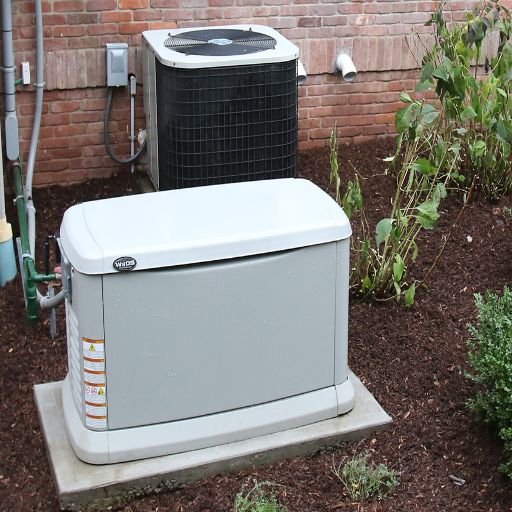
Calculating Your Home’s Running Wattage Requirements
Calculating how big of a natural gas generator your home needs starts by figuring out your total running wattage requirements. Make a list of all the appliances and systems that must function during a power blackout. This typically contains refrigerators, HVAC systems, sump pumps, lighting, medical devices, if applicable, and quite a few others. Also, make sure to check the manufacturer’s specifications for each appliance regarding the running wattage and if the case of starting wattage is needed too. Pay extra attention to the devices that contain motor equipment because they tend to use more power than they need to, which may end up hurting your pockets.
After collecting the wattage information, add all of the critical systems together that require operating, and calculate the running wattage. Don’t forget to include a safety margin of electric reserves of 20 to 25 percent for unexpected electrical demand increases or calculating inaccuracies. For running wattage, we base the calculations around 8000 watts, but to be able to sustain overloading, make sure to size the generator to at least around 10000 watts.
Professional consultations and advanced calculation tools from generator manufacturers can improve the accuracy of estimation. By taking factors such as altitude, temperature changes, and natural gas supply pressure into account, customization prevents performance loss. A tailored generator results in enhanced longevity and decreased operational and maintenance inefficiencies and costs.
Essential Appliances vs. Whole-House Backup Power Options
It is important to differentiate between essential appliance protection and whole-house backup power coverage to make effective and use-case-specific decisions. With essential appliance backup, power must always remain active for critical systems like refrigerators, medical equipment, heating, cooling, and security systems. These setups require smaller generators, which are less cost-effective or simple to install. Though they may sustain a certain part of the critical power infrastructure, they may prove insufficient for non-essential systems during an outage.
On the contrary, backup power solutions that offer full coverage allow for uninterrupted energy delivery to every electric circuit in a given household. Operating with standby generators and automatic transfer switches, these systems ensure that all appliances, lights, and outlets function seamlessly at all times. Although whole-house systems are incredibly convenient due to their coverage and ease of use for performing regular daily tasks, they are not without their flaws. These tend to require initial load value calculations, advanced fuel or energy reserves to withstand system demands, and increased upfront expenditures.
Considering your household’s energy priorities, budget limits, and the chances of prolonged outages helps identify what works best for you. The use of load assessment tools and local outage pattern reviews can help streamline your workflow to better utilize the selected backup power solution.
What Are the Ongoing Costs of Running a Natural Gas Whole House Generator?
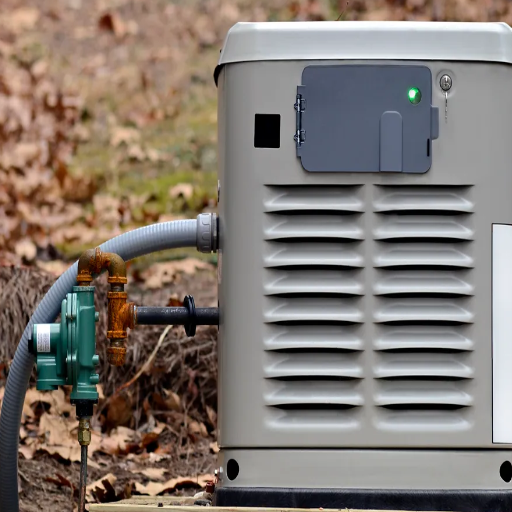
Monthly Fuel Costs for Natural Gas Generator Operation
The monthly fuel expenses incurred from operating a whole-house natural gas generator depend on the gas market price and the generator’s efficiency, runtime, load, and energy output. As a general norm, natural gas-fueled generators show increased fuel consumption with growth in electricity demand. At mid-level load (around 50%). A 20 kw generator, for instance, during ½ load may burn centrifugal gas 1.6 to 2.2 therms an hour, whereas it burns 2.9 to 3.8 at peak load.
For a typical usage, let’s say the generator worst worst-case scenario runs for 24 hours continuously during an outage, this will equate to consuming anything from 48-91 therms of natural gas in a day. Furthermore, the increased rate of $1.10/ therm of gas brings the wear and tear operational cost for the system to an alarming $52.8-100.10. If the unit operates on a rolling blackout basis for about three days in a month, the fuel operational cost might settle anywhere from $126-302 per month. At sustained usages depends directly on other overriding cost factors markup, depending on where in the country the user is located, which would also likely impact these figures.
To optimize these expenses, it is suggested that homeowners focus on the use of essential systems during the generator outages and operate the generator at the lowest possible level needed. Regularly scheduled maintenance, like air filter cleaning and engine adjustment, will help reduce fuel consumption as well as enhance operational efficiency over a longer period.
Maintenance Costs and Service Requirements
From an engineering standpoint, adequate maintenance of any equipment is critical in ensuring productivity, improving uptime, and extending the useful life of the generator equipment. Maintenance usually consists of changing the oil and spark plugs, cleaning the air filter, and inspecting the fuel line as well as the connectors for wear and damage. In the case of home standby generators, the standby generator requires servicing at least once every 12 months, which, in turn, on average, costs between $150 to $300, depending on the size, brand, and usage of the generator.
Alternately, fines for not performing basic maintenance can be reimbursed in the case of servicing, which is often more fine-grained, like specialized diagnostic batteries or even control module replacement. Authorised servicemen typically charge around $200-$500 every year for basic maintenance and on-the-spot repairs, which ensures guaranteed frequent monitoring so people do not miss key power outage moments. It is best to combine maintenance tasks according to the advice of the equipment manufacturer, which usually prefers feedback after monitoring of 100-200 operational hours or annually.
Failing to perform maintenance routines can lead to performance decrease, fuel overconsumption, or more expensive catastrophic failures. Having a maintenance plan allows homeowners to enhance power outage resilience while guaranteeing performance during emergencies.
Are There Ways to Save on Whole House Generator Costs?

Tax Incentives and Rebates for Home Standby Generator Installation
The purchase of a home standby generator comes with added expenditure due to installation, though there are rebates and tax incentives available to aid with the purchase cost. Generally, state and local governments grant tax credits or deductions for improving energy efficiency relative to the standby generators, especially when they are paired with renewables such as solar panels. For example, with the Standby Generators that support energy systems, generators integrated with solar are eligible under the Residential Renewable Energy Tax Credit for partial credits; hence, owners would qualify for supporting generators that power sustainable forms of energy.
Moreover, rebates for backup power systems as per energy efficiency and grid reliability programs are offered by some utility companies. Depending on the specific features of the generator, like its brand, capacity, or efficiency, these rebates can range from 300 to 1200. For emergency preparedness proposals, regions that face regular power outages tend to subsidize generator installation through tax relief or other proactive community resilience-building financial incentives. Local energy departments and tax specialists remain the best way to go for achieving maximum savings based on the program criteria and rules, thus fully exploiting the open-ended offers that clients are eligible for.
These incentives could soften the tax burden on homeowners, thus enabling the combining of these benefits with extensive form research to fetch the best generator models most cost effective and efficient in the long run during sustained outages.
Best Time to Purchase a Home Generator for Maximum Savings
The best time to buy a home generator to maximize savings is usually around the off-peak times for retail and construction. In late winter and early spring, the prices tend to be the most competitive because the demand for generators is usually lower than when there’s a chance of hurricanes or storms. Retailers tend to offer discounts lower lower-demand periods so that they can sell older stock in anticipation of new arrivals later in the year.
Also very careful with spending towards the end of a fiscal quarter or year is beneficial because retailers tend to use discounts to reach certain sales requirements during that period. It is very important to keep track of the timing of the rebate programs and the dates when tax credits can be claimed because, more often than not, these incentives are limited by time and are subject to certain legislative cycles. Changes in energy policies or the addition of federal tax incentives for backup power systems will heavily aid in reducing the overall costs if correctly timed.
Exploiting analytics from recent sales cycles and price change history helps forecast optimal purchase periods. Following is a list of suggestions provided by prior users of these tools that can assist you in making the best informed decision. Use these methods to make sure you strategically time your purchase, while ensuring it remains economical during the calculated purchasing period.
References
Frequently Asked Questions (FAQs)
Q: What are the average costs for a whole-home generator that runs on natural gas?
A: The average cost of a natural gas whole-house generator ranges from $7,000 to $15,000 installed, though the total price varies depending on several factors. Generac, a leading manufacturer of residential generators, offers models across various price points. Small units (8- 11kW) typically cost $3,000-$5,000 for the equipment alone, mid-size units (16- 22kW) range from $5,000-$8,000, and large units (22-48kW) can cost $9,000-$15,000. Installation adds another $3,000-$5,000 on average, with the final amount influenced by the complexity of connecting the generator to your home’s systems.
Q: How do I determine the proper generator size for my home?
A: The size of the generator you need depends on your power requirements and what you want to run during an outage. For essential circuits only (refrigerator, some lights, furnace), an 8- 14kW generator may suffice. For most average homes wanting to power major appliances, a 16- 22kW unit is typically recommended. Larger homes or those wanting complete whole-home backup need 22- 48 kW generators. To precisely calculate the right size, list all appliances you want to power simultaneously (paying special attention to high-draw items like air conditioners and electric water heaters), add up their wattage requirements, and include a 20% buffer for surge power. Many generator dealers offer free home assessments to help determine the appropriate size.
Q: What fuel type options are available for whole-house generators, and how does natural gas compare?
A: Whole house generators can run on natural gas, liquid propane (LP), or diesel fuel. Natural gas is popular because it connects directly to existing gas lines, providing unlimited runtime during extended outages without needing refueling. It’s generally cheaper than propane and cleaner-burning than diesel. Propane requires tank installation and periodic refilling, but it works well in areas without natural gas service. Diesel generators offer excellent fuel efficiency and durability, but cost more upfront, require regular maintenance, and storage tanks for the fuel. Natural gas is often preferred for residential generators due to convenience, though gas prices and availability in your area should be considered when making your decision.
Q: How does the generator size affect the overall cost of a natural gas generator?
A: Generator size significantly impacts cost, with price increasing proportionally with kW output. Smaller units (8- 11kW) start around $3,000-$5,000 for equipment, mid-range units (16- 22kW) cost $5,000-$8,000, and larger units (22- 48kW) range from $9,000-$15,000+. The size of the generator you select will depend on your power needs and budget. Beyond the initial generator purchase price, larger units require more extensive installation work, potentially including electrical panel upgrades, larger concrete pads, and more complex gas line connections. Additionally, bigger generators consume more fuel during operation, affecting long-term operating costs. For most average homes, a 16- 22kW generator offers the best balance of power capability and cost.
Q: What additional costs should I consider beyond the generator purchase itself?
A: Beyond the generator purchase, you should budget for installation ($3,000-$5,000), which includes electrical connections, gas line work, and concrete pad installation. An automatic transfer switch (ATS) is essential, costing $500-$2,000 depending on size and capabilities. Permits and inspections add $200-$500. Maintenance costs average $200-$400 annually for service visits. You may need electrical panel upgrades ($1,000-$3,000) if your current system can’t support the generator. Gas meter upgrades might be required ($500-$1,000) to ensure adequate flow. Other potential costs include landscaping restoration, sound-dampening enclosures, and extended warranties. The contractor you choose can significantly impact both quality and cost, so obtaining multiple detailed quotes is recommended.
Q: What are some common generator FAQs regarding installation and permits?
A: Common generator FAQs about installation include: Permits are almost always required before installation, typically costing $200-$500 and covering electrical, gas, and sometimes zoning approvals. Installation typically takes 1-2 days for standard setups but can extend to 3-4 days for complex situations. Generators must be installed outdoors with specific clearances from windows, doors, and combustible materials (typically 18-36 inches, depending on local codes). Many localities have noise ordinances limiting generator sound levels, though modern units are much quieter than older models.
Q: How does generator size and fuel type affect long-term operating costs?
A: The size of the generator and fuel type significantly impact long-term costs. Larger generators consume more fuel per hour of operation – for example, a 22kW natural gas generator typically uses 2.9-3.6 cubic feet per kWh, while a 10kW unit uses proportionally less. Natural gas is generally more economical than propane or diesel for regular use, especially with fluctuating gas prices. However, efficiency varies by model and load percentage – generators run most efficiently at 70-80% of rated capacity. Maintenance costs also increase with size, with larger units requiring more frequent service. When calculating lifetime costs, consider your area’s frequency of power outages – in high-outage areas, the fuel efficiency of your generator becomes more important. For occasional use in areas with infrequent outages, the initial purchase price may matter more than small differences in fuel consumption.
Q: What maintenance costs should I expect for a natural gas whole-house generator?
A: Expect to spend $200-$400 annually on professional maintenance for your natural gas generator, which includes oil changes, filter replacements, spark plug inspection, and system checks. Most manufacturers recommend service every 6-12 months or after 100-200 hours of operation, whichever comes first. DIY maintenance can reduce costs but may affect warranty coverage. Additional maintenance considerations include battery replacement every 2-3 years ($150-$300), transfer switch inspection, and occasional deep cleaning. Many generator dealers offer maintenance plans that provide regular scheduled service at a discount compared to one-off visits. For extended peace of mind, extended warranty plans are available, typically costing $500-$2,000 depending on coverage length and terms. Proper maintenance is crucial not only for reliability during outages but also for maximizing the 15-20 year expected lifespan of your generator investment.
Q: How does a whole-home generator compare to a portable generator for backup power?
A: A whole-home generator provides automatic, comprehensive backup power, while a portable generator offers limited, manual backup at a lower cost. Permanent whole-home systems start automatically during outages, power most or all of your home, run on natural gas (eliminating refueling), operate safely outdoors, and typically last 15-20 years. They add value to your home but cost $7,000-$15,000+ installed. In contrast, a portable generator costs $500-$2,000, requires manual setup during outages, powers only essential circuits via extension cords or a manual transfer switch, needs gasoline refueling every 8-12 hours, must be operated away from the home due to carbon monoxide risk, and lasts 3-5 years with heavy use. For occasional, brief outages in temperate climates, a portable generator may suffice. For frequent or extended outages, homes with medical equipment, or regions with extreme weather, a whole-home generator provides superior protection and convenience.




